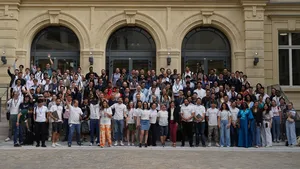Google's AI Red Team: the ethical hackers making AI safer

Last month, we introduced the Secure AI Framework (SAIF), designed to help address risks to AI systems and drive security standards for the technology in a responsible manner.
To build on this momentum, today, we’re publishing a new report to explore one critical capability that we deploy to support SAIF: red teaming. We believe that red teaming will play a decisive role in preparing every organization for attacks on AI systems and look forward to working together to help everyone utilize AI in a secure way. The report examines our work to stand up a dedicated AI Red Team and includes three important areas: 1) what red teaming in the context of AI systems is and why it is important; 2) what types of attacks AI red teams simulate; and 3) lessons we have learned that we can share with others.
What is red teaming?
Google Red Team consists of a team of hackers that simulate a variety of adversaries, ranging from nation states and well-known Advanced Persistent Threat (APT) groups to hacktivists, individual criminals or even malicious insiders. The term came from the military, and described activities where a designated team would play an adversarial role (the “Red Team”) against the “home” team.
Over the past decade, we’ve evolved our approach to translate the concept of red teaming to the latest innovations in technology, including AI. The AI Red Team is closely aligned with traditional red teams, but also has the necessary AI subject matter expertise to carry out complex technical attacks on AI systems. To ensure that they are simulating realistic adversary activities, our team leverages the latest insights from world class Google Threat Intelligence teams like Mandiant and the Threat Analysis Group (TAG), content abuse red teaming in Trust & Safety, and research into the latest attacks from Google DeepMind.
Common types of red team attacks on AI systems
One of the key responsibilities of Google’s AI Red Team is to take relevant research and adapt it to work against real products and features that use AI to learn about their impact. Exercises can raise findings across security, privacy, and abuse disciplines, depending on where and how the technology is deployed. To identify these opportunities to improve safety, we leverage attackers' tactics, techniques and procedures (TTPs) to test a range of system defenses. In today’s report, there is a list of TTPs that we consider most relevant and realistic for real world adversaries and red teaming exercises. They include prompt attacks, training data extraction, backdooring the model, adversarial examples, data poisoning and exfiltration.

Lessons learned
We’ve already seen early indications that investments in AI expertise and capabilities in adversarial simulations are highly successful. Red team engagements, for example, have highlighted potential vulnerabilities and weaknesses, which helped anticipate some of the attacks we now see on AI systems. Here are the key lessons we list in the report.
- Traditional red teams are a good starting point, but attacks on AI systems quickly become complex, and will benefit from AI subject matter expertise.
- Addressing red team findings can be challenging, and some attacks may not have simple fixes, so we encourage organizations to incorporate red teaming into their work feeds to help fuel research and product development efforts.
- Traditional security controls such as ensuring the systems and models are properly locked down can significantly mitigate risk.
- Many attacks on AI systems can be detected in the same way as traditional attacks.
Looking forward
Since its inception over a decade ago, Google’s Red Team has adapted to a constantly evolving threat landscape and been a reliable sparring partner for defense teams across Google. We hope this report helps other organizations understand how we’re using this critical team to secure AI systems and that it serves as a call to action to work together to advance SAIF and raise security standards for everyone. We recommend that every organization conduct regular red team exercises to help secure critical AI deployments in large public systems. You can review more information on SAIF implementation, securing AI pipelines, and you can also check out my talk this year at the DEF CON AI Village.






